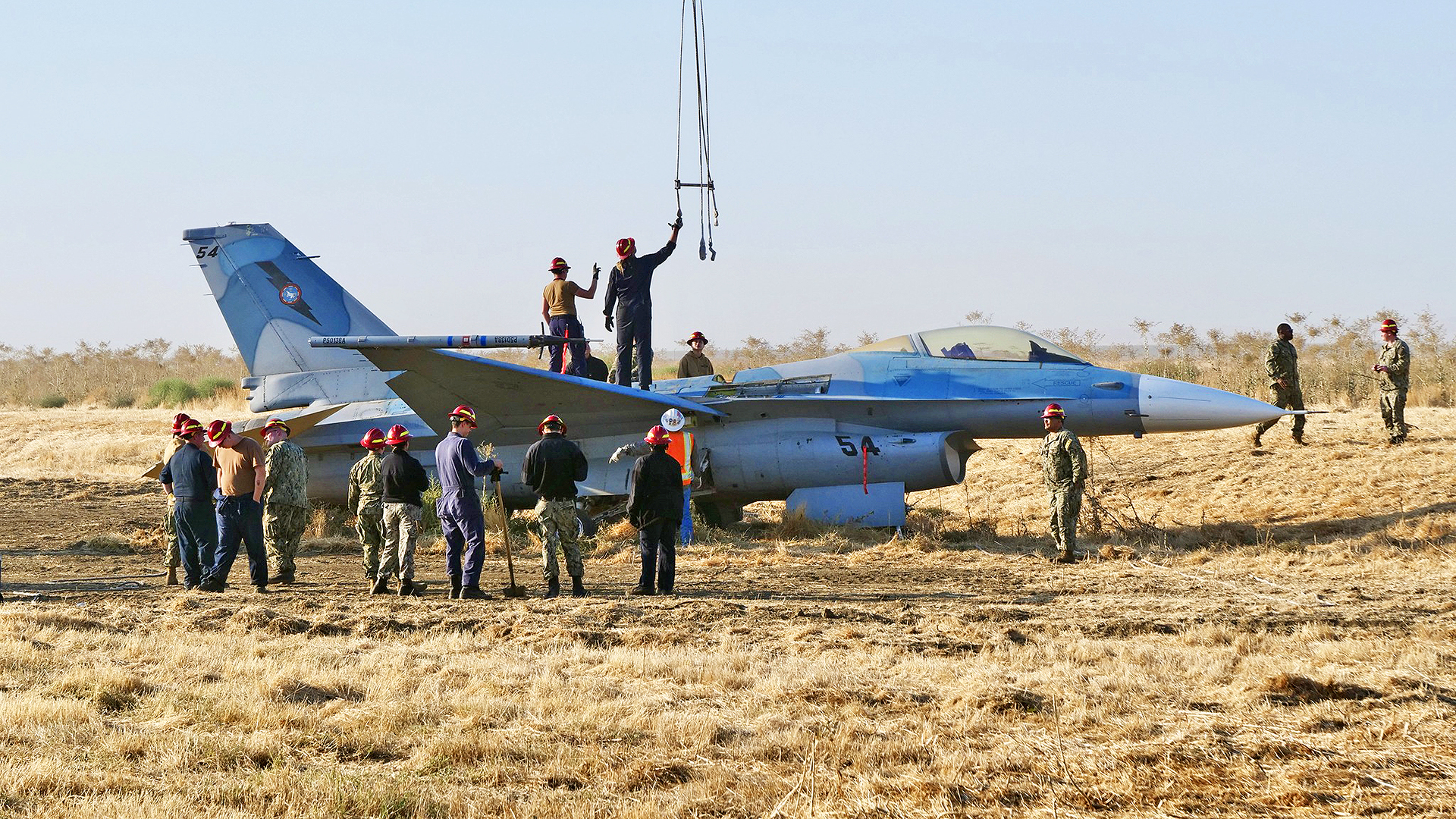An F-16 operated by the Naval Aviation Warfighting Development Center (NAWDC), the organization that includes the famous TOPGUN school, ran off the runway at Naval Air Station Lemoore, California, in a previously unreported incident last week. A significant effort was required to get the jet back on the runway, as photos from the effort now reveal.
The photos of the recovery were published on NAS Lemoore’s Facebook page yesterday, together with a few more details of the accident itself.

The F-16 was operating out of NAS Lemoore — home of Strike Fighter Wing Pacific, and one of two Navy master fighter bases — having been deployed there from its usual home at NAS Fallon, Nevada, and was taking part in a routine training mission when it departed the runway. NAWDC jets frequently deploy to Lemoore for basic fighter maneuvers (BFM) air combat training, as well as in support of exercises off the coast of California.

The recovery saw “an incredible level of teamwork,” with NAS Lemoore (NASL) expressing its thanks to NASL Public Works, NASL Transportation, Fresno Air National Guard, NASL Air Operations, Fed Fire, Edwards Air Force Base, American Crane Rental, as well as “several of NASL’s finest AVs (avionics technicians).”
“This coordinated effort, which took precise planning, safely moved the jet back onto the runway without any complications,” the base confirmed. “Thank you to the many entities that came together to make this happen!”
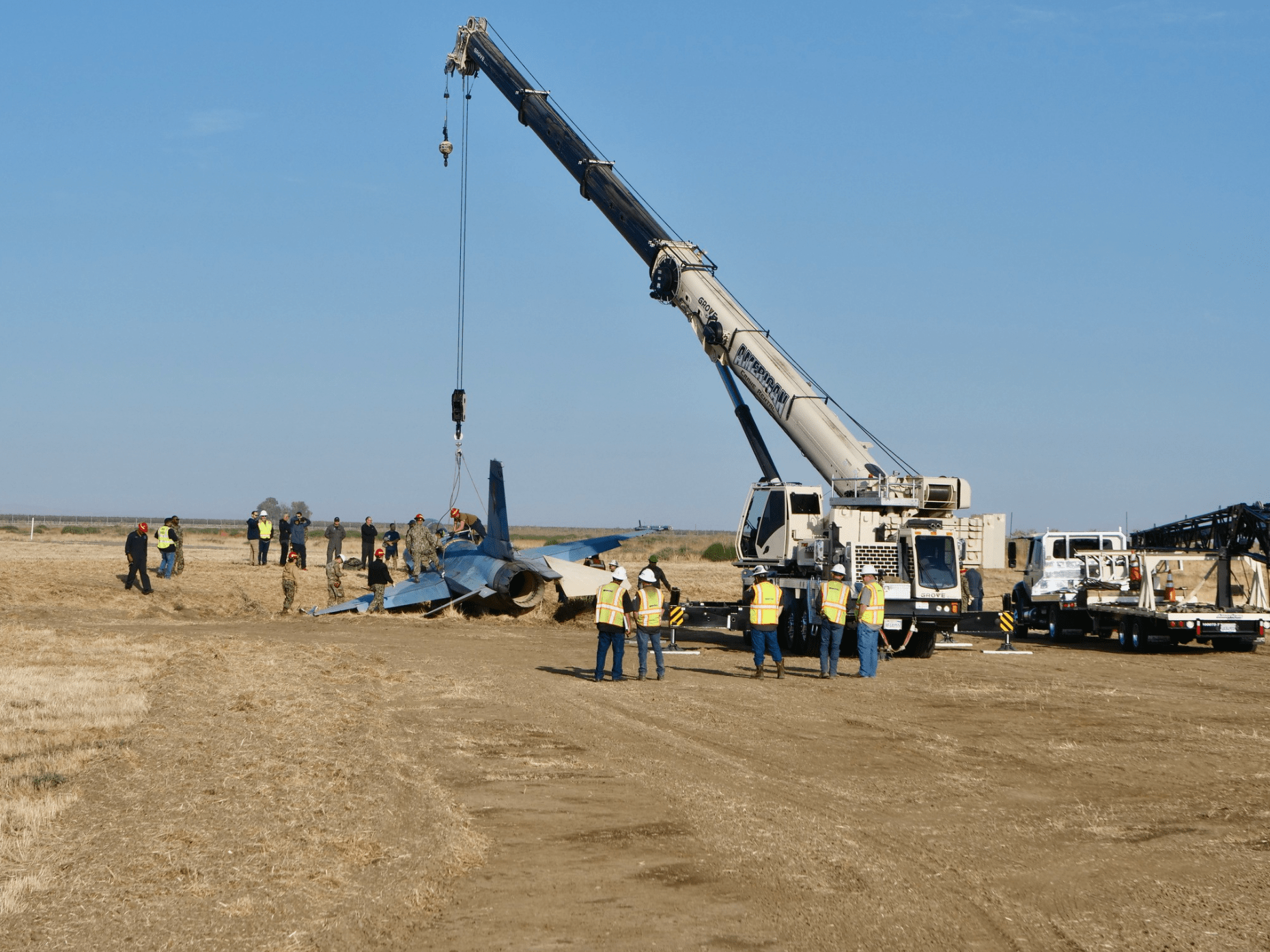
The photos show the canopy still on the jet, indicating that the pilot did not need to eject. No further details of the accident itself were provided but we have reached out to both bases for more information as to exactly what happened.
As for the aircraft involved, this is one of NAWDC’s single-seat F-16As, specifically serial 90-0945.
This aircraft is part of a batch of F-16s that had been manufactured for Pakistan but were subsequently embargoed. Intriguingly, it appears that, at one point in the mid-2010s, 90-0945 began to be cannibalized — being stripped down for spare parts to keep other Navy Vipers flying. However, by 2018 it had been returned to fight status and, within the next couple of years, traded its brown adversary color scheme for the current blue one.
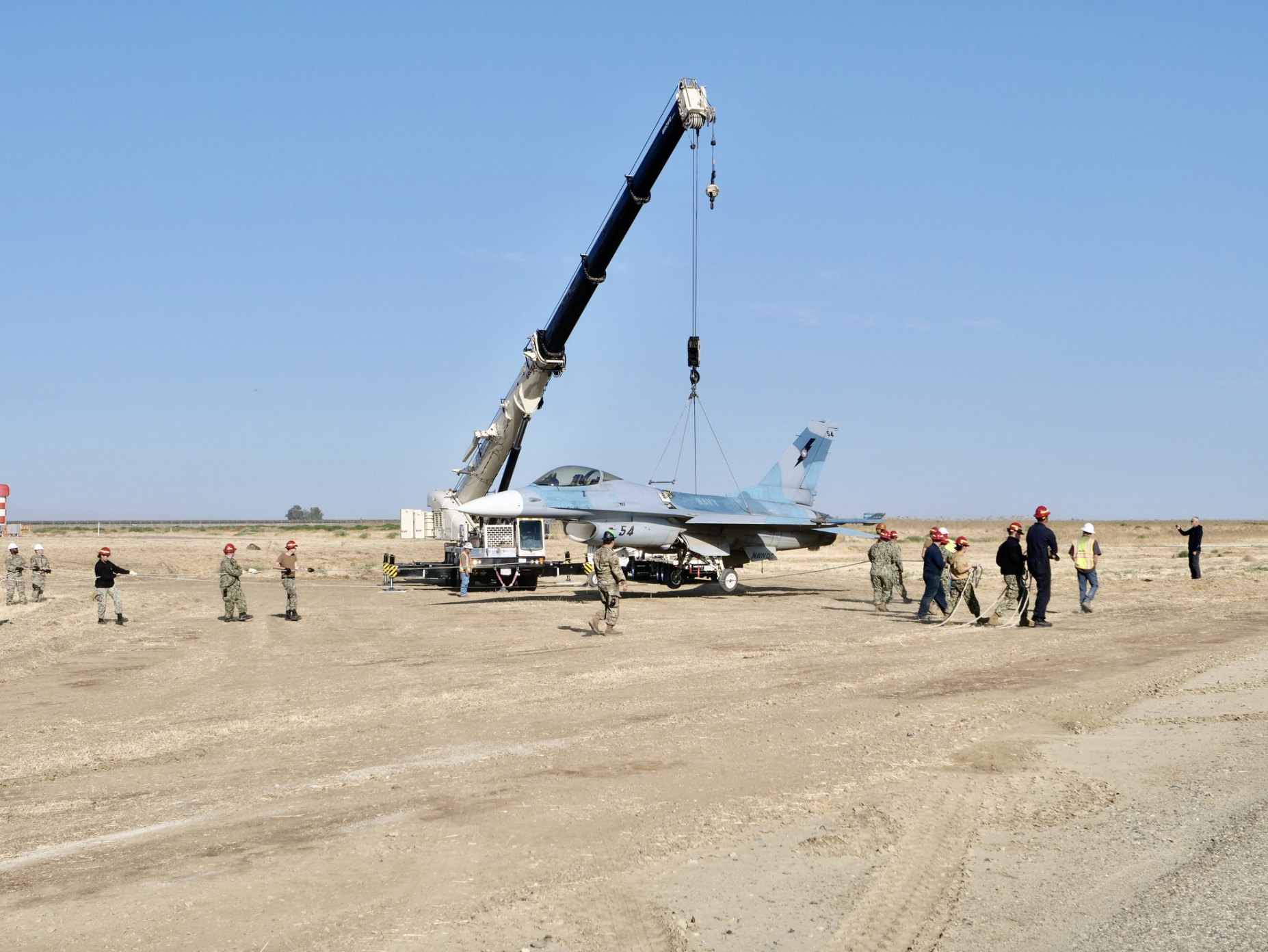
A total of 14 F-16 Block 15 OCU aircraft that had been originally built for Pakistan were taken from the Aircraft Maintenance And Regeneration Center (AMARC) at Davis-Monthan Air Force Base, Arizona, and then delivered to the U.S. Navy for adversary work. These comprised eight single-seat F-16As and six two-seat F-16Bs.
These were not the first Vipers to fly in Navy colors, however. Before the F-16A/Bs arrived, the Navy had operated a special version of the F-16, the F-16N (for Navy), first received in the mid-1980s. The aircraft was something of a hotrod, with a strengthened and lightened airframe based on the F-16C/D Block 30 but with the older AN/APG-66 radar from the F-16A/B. The M61A1 cannon was also removed, to save weight. The aircraft were retired prematurely, in 1994, after showing signs of metal fatigue, a result of the rigors of air combat maneuvering.
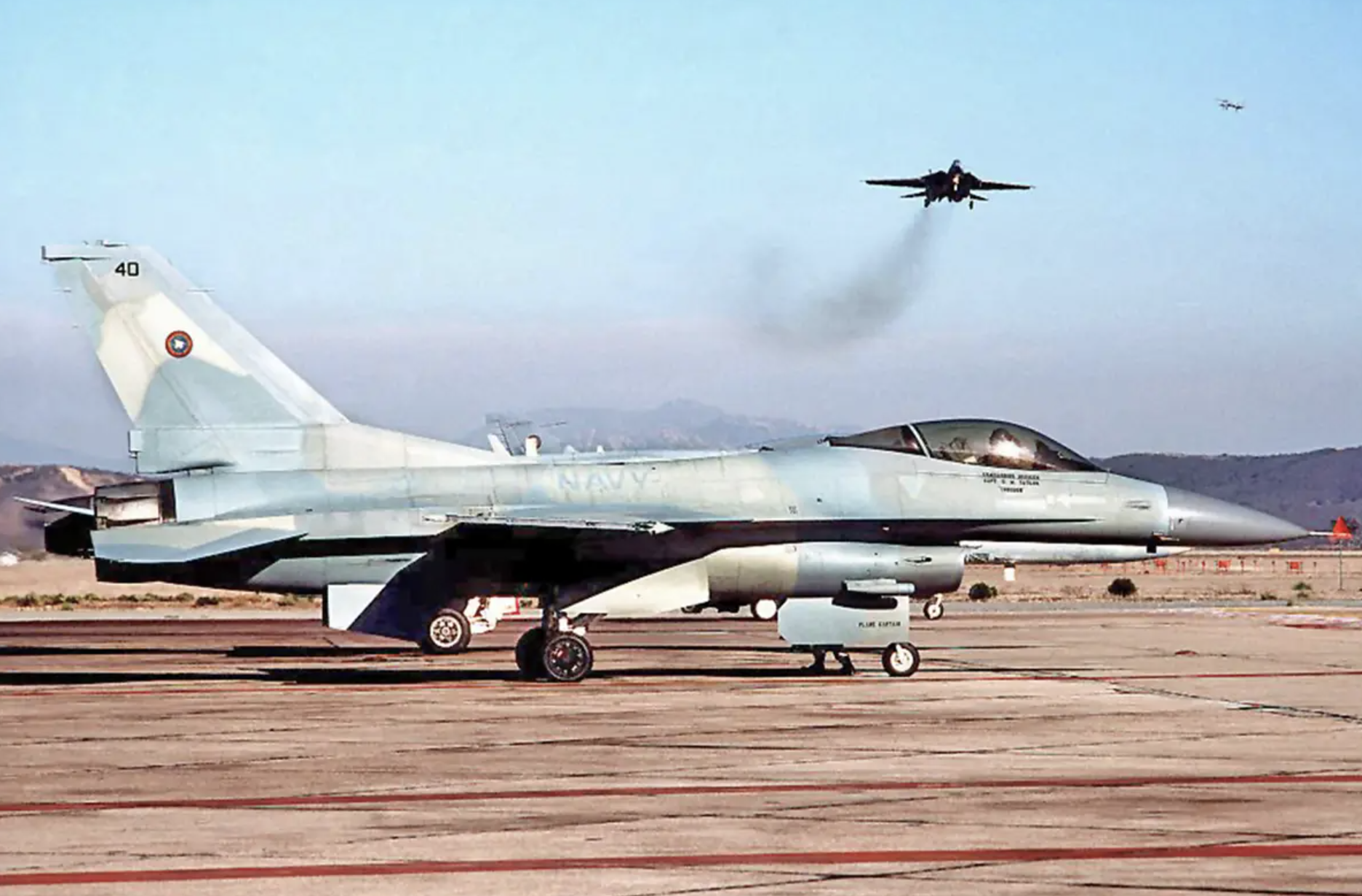
More recently, the Navy has moved to further increase its fleet of F-16 aggressor jets. In 2021, the service announced that it would be receiving 20 single-seat F-16C Block 32 aircraft and six two-seat F-16D Block 25 aircraft. These were transferred to the Navy as the U.S. Air Force retired them under a scheme to divest 124 F-16s by 2026, with the Air Force now consolidating on Block 40 and above.
The first of the ex-Air Force F-16C/Ds replaced F-5N Tiger IIs assigned to Fleet Composite Squadron 13 (VFC-13) “Fighting Saints,” also at NAS Fallon. Unlike the NAWDC jets, the F-16C/Ds have so far not been repainted in specific adversary color schemes. Nevertheless, this Naval Reserve Force squadron specializes in enemy threat replication, or ‘red air,’ in support of NAWDC, so its jets may well adopt these paint schemes in the future.
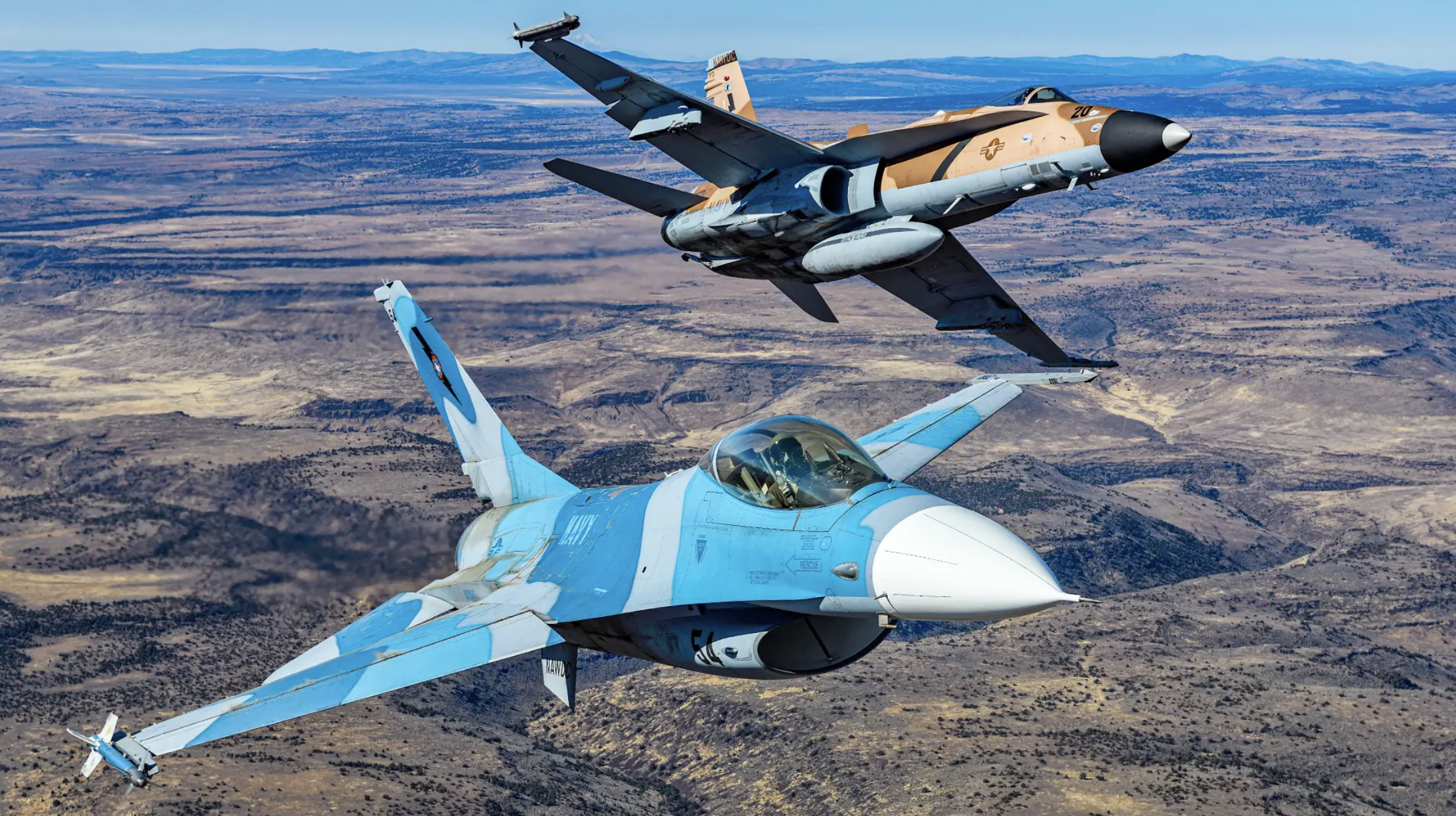
While 12 of the F-16Cs have been allocated to VFC-13, the remaining eight F-16Cs, and six F-16Ds will go to NAWDC, enabling that establishment to replace its remaining ‘legacy’ F/A-18 Hornets.
Reflecting the importance of these Navy Vipers, the 14 F-16A/B aircraft are being upgraded under the F-16 Service Life Extension Program (SLEP) Operational Safety Improvement Program (OSIP). This work will increase their service life to 8,000 equivalent flight hours and extend service life through airframe strengthening.
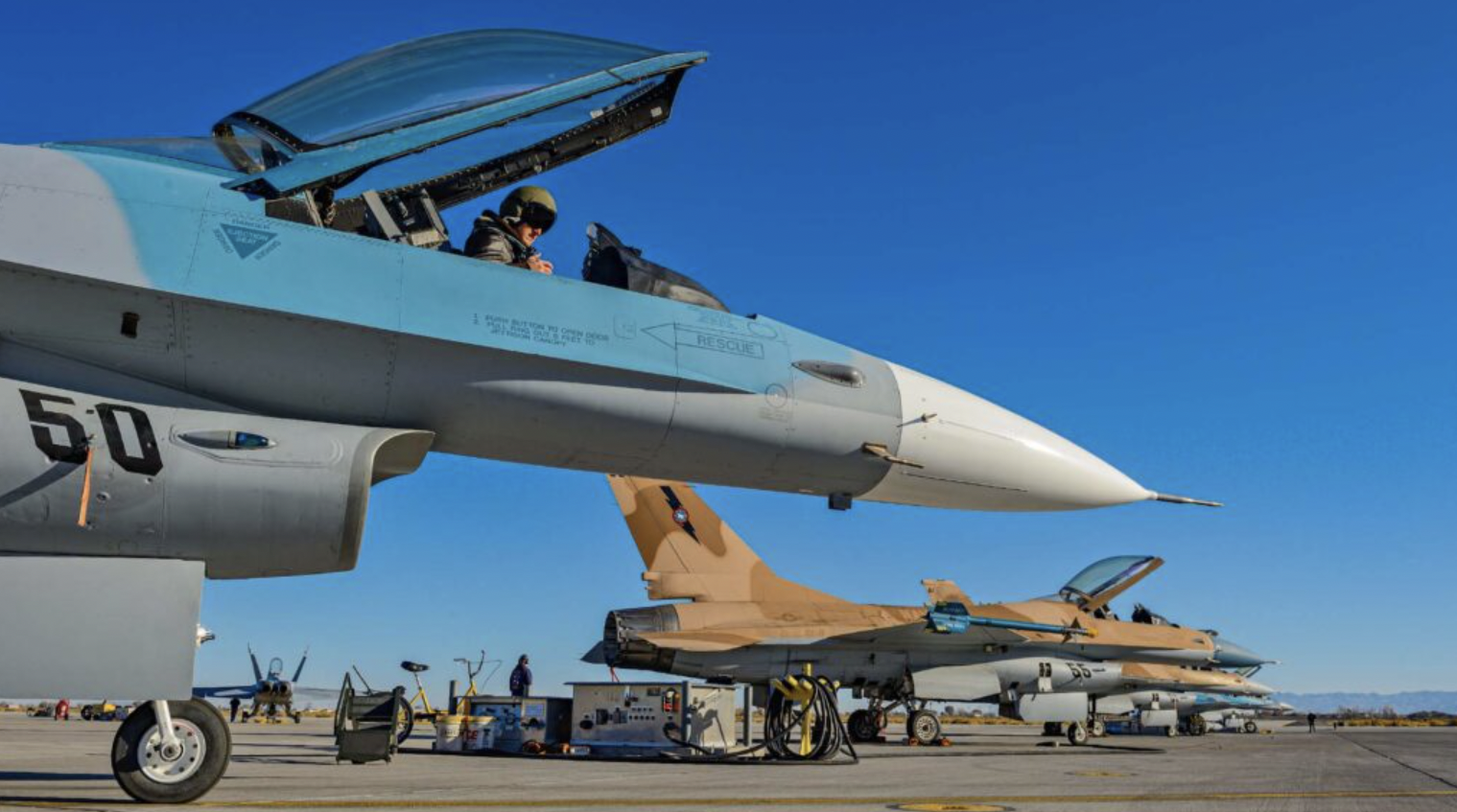
Meanwhile, the 20 F-16Cs Block 32 aircraft are also being modernized, bringing them in line with Air Force Block 30/32 jets.
Navy F-16s are also planned to receive the Northrop Grumman AN/APG-83 active electronically scanned array, or AESA, radar, for a significant boost in capability.
With the Navy planning to fly both F-16s and F-5s as its primary adversary aircraft through 2035, these airframes are very precious, and it seems very likely that every effort will be made to return 90-0945 back to flight status as quickly as possible so it can continue to contribute to the service’s vital high-end ‘red air’ capability.
Contact the author: thomas@thedrive.com
